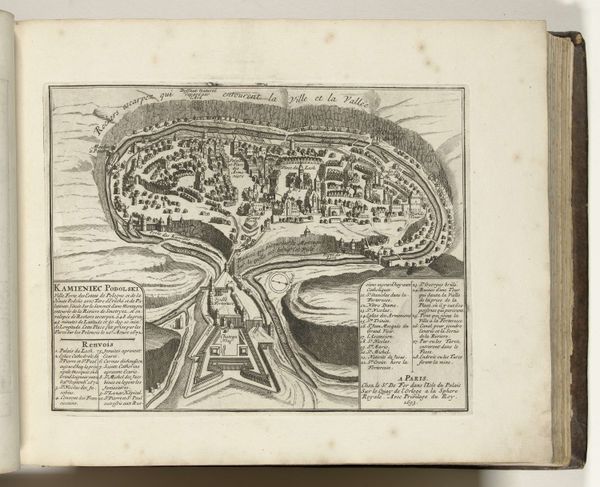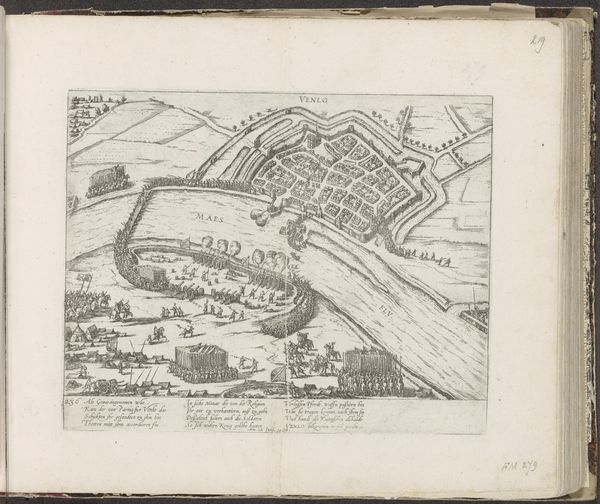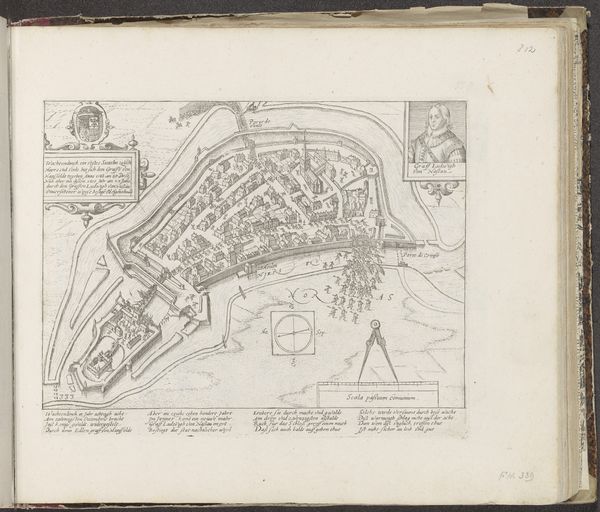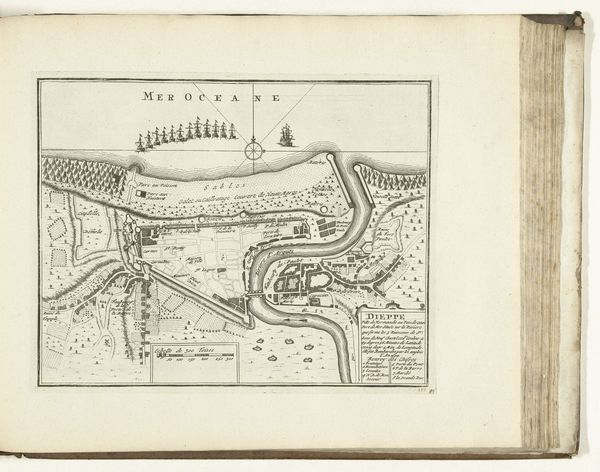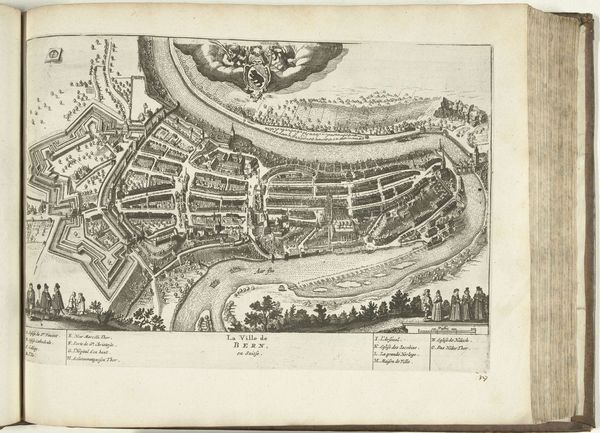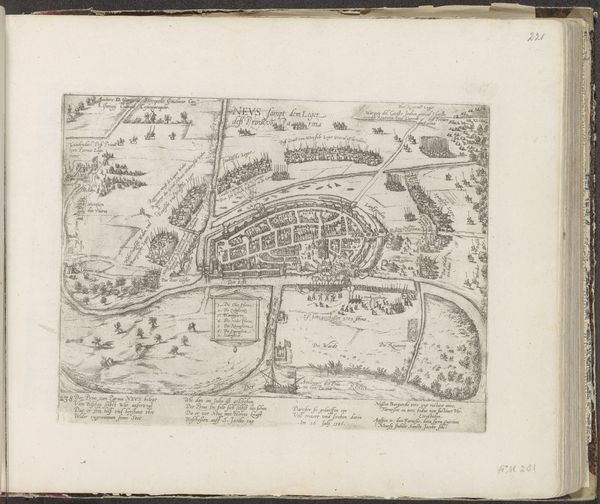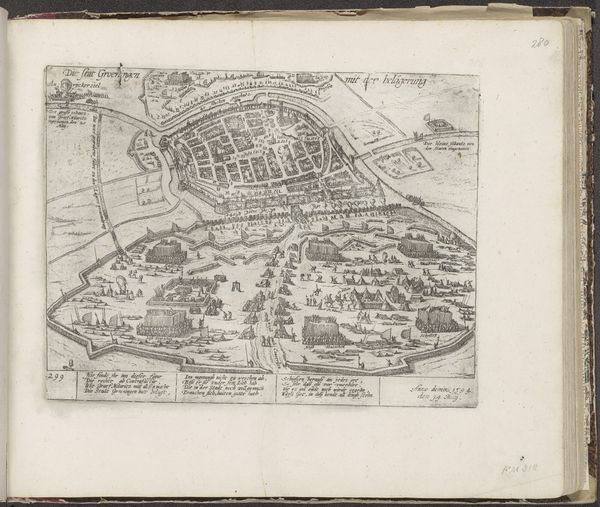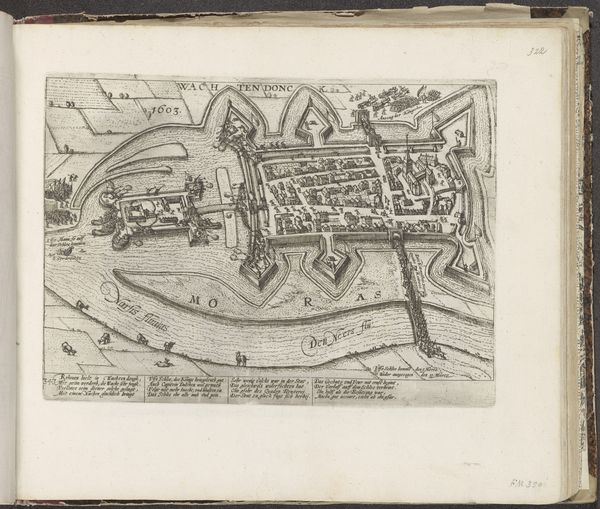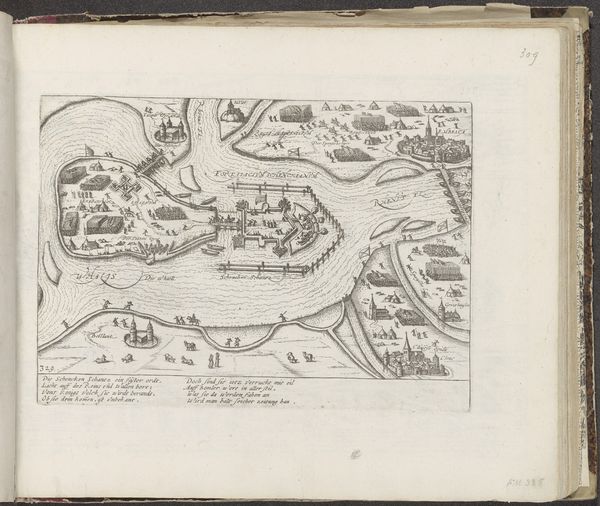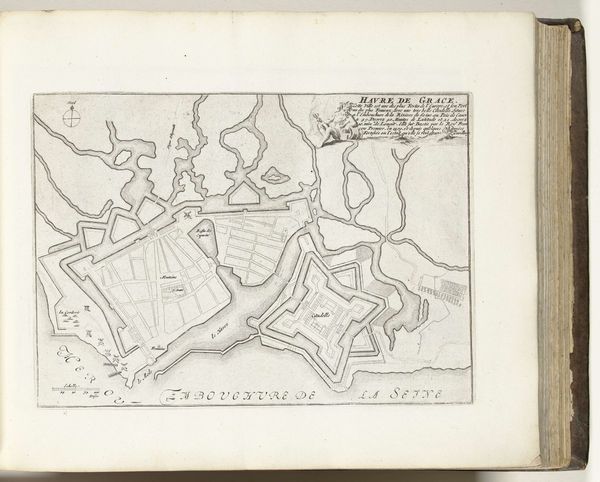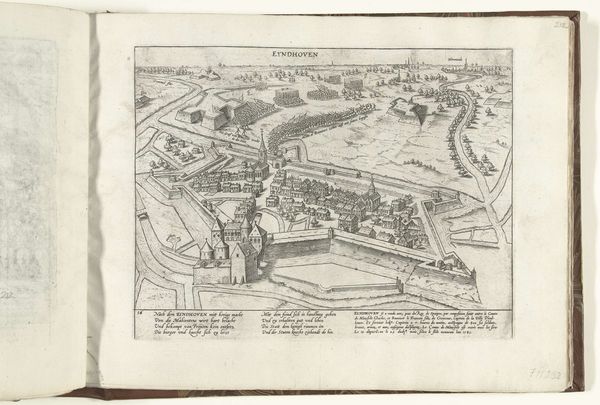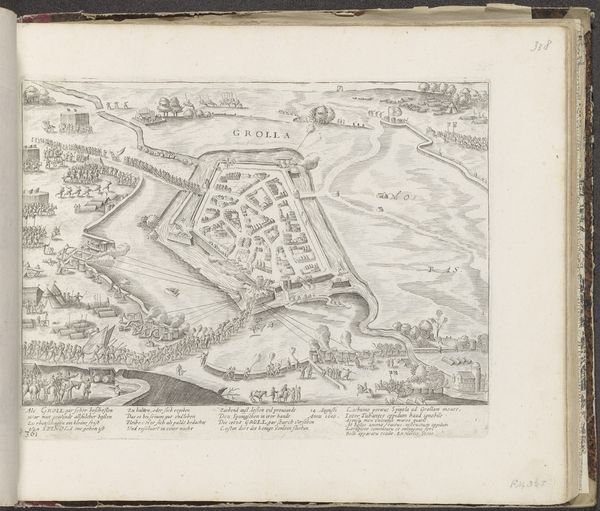
drawing, print, ink, engraving
#
drawing
#
baroque
# print
#
landscape
#
ink
#
cityscape
#
history-painting
#
engraving
Dimensions: height 218 mm, width 293 mm
Copyright: Rijks Museum: Open Domain
Curator: Today we're looking at a print titled "Plattegrond van Kamien Pomorski, 1726", made around 1726. It’s currently held in the Rijksmuseum collection. Editor: At first glance, I see this fascinating bird's-eye view – almost unsettling with its strategic detail. It gives you this strange, omniscient sense of power. It also looks meticulously crafted with ink. Curator: Precisely. It is an engraving. Consider how such prints disseminated knowledge and power structures. Mapmaking during the baroque era wasn't merely about geographical accuracy; it was about asserting control, projecting an image of a well-ordered, manageable domain, usually for trade and war planning. Editor: Definitely. The surrounding text blocks situate it – these are documents of administration and early forms of social engineering. How does the act of surveying and rendering a space affect the lives of people who inhabit the space? The creation of a visual inventory enables easier control and oversight from colonial powers. Curator: Think too about the material cost: the paper, the ink, the engraver's labor. Prints like these were circulated, consumed by elites, often depicting colonial gains. Consider also who owned and commissioned such artworks, and who was thus excluded from the consumption or critique of these kinds of objects. Editor: The choice of viewpoint also establishes a hierarchy – a separation from lived experiences on the ground, especially considering we only know it as the work of someone “anonymous." Who makes decisions about land use, planning, and urban development then becomes paramount. I imagine such visual tools allowed city developers to enforce and maintain policies affecting communities. Curator: Precisely. Its sharp, precise lines—evidence of the engraver’s skilled labor—emphasize function. These choices serve political and economic ends above all, influencing relationships between ruling structures, access to resources, and class divides, shaping communities over time. Editor: Absolutely. Examining the history allows one to connect baroque sensibilities to broader historical themes like imperialism, power, wealth, and visibility – it all has lasting repercussions on populations to this day. Curator: And the anonymous creator allows us to look at the production value itself to ask better questions, rather than simply appreciating "art". Editor: Exactly, by deconstructing its layers, we unlock its significance to reveal a visual instrument of power with lasting effects.
Comments
No comments
Be the first to comment and join the conversation on the ultimate creative platform.
